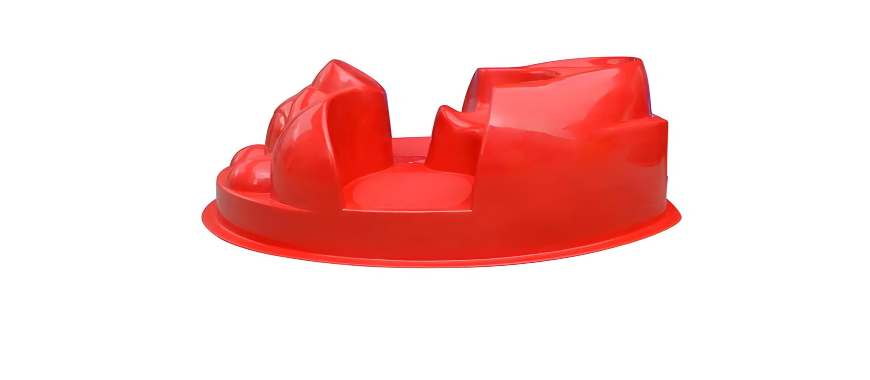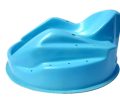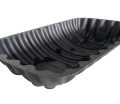
When deciding between an aluminum vs fiberglass crappie boat, it’s important to consider several factors that impact your fishing experience. Crappie fishing often takes place in calm, shallow waters, and the right boat can make all the difference in maneuverability, stability, and durability. Aluminum boats are lighter and easier to handle, making them a good choice for smaller bodies of water or for those who need a more affordable option. On the other hand, fiberglass crappie boats are more durable and provide a smoother ride, making them suitable for more challenging water conditions. Both materials have their pros and cons, so understanding the differences in performance, cost, and maintenance is essential when choosing the best boat for your needs. By considering these factors, you can ensure a more enjoyable and successful crappie fishing experience.
The Key of Aluminum vs Fiberglass Crappie Boat for Fishing Success
Choosing between aluminum vs fiberglass crappie boat can significantly impact your fishing experience. Both options offer unique benefits and challenges, catering to specific fishing environments and preferences. Below, we explore the characteristics of aluminum and fiberglass crappie boats to help you decide which best suits your needs.
Advantages of Aluminum Crappie Boats for Fishing
Aluminum crappie boats are a practical choice for anglers due to their lightweight and durable nature. These qualities make them ideal for shallow waters and areas with underwater obstacles.
Their lightweight design ensures easy maneuverability, both in and out of the water. Launching and transporting an aluminum crappie boat is a straightforward process, perfect for anglers moving between fishing spots.
Durability is another key strength. Aluminum can withstand impacts from rocks, branches, or other submerged objects, which are common in crappie fishing locations. This resilience reduces the likelihood of structural damage.
Aluminum boats also have a lower upfront cost. Their simple construction and widely available materials make them accessible for anglers on a budget, including beginners looking for their first crappie boat.
Maintenance for aluminum boats is minimal in freshwater environments. Regular cleaning and protective coatings can further extend their lifespan, making them a cost-effective option over time.
Why Fiberglass Crappie Boats Stand Out
Fiberglass crappie boats offer features that appeal to anglers seeking stability, design versatility, and quieter performance on the water.
Their heavier weight provides increased stability, especially in choppy waters. This makes fiberglass boats a reliable choice for larger lakes or windy conditions.
The aesthetic appeal of fiberglass boats is unmatched. Smooth finishes, stylish designs, and customization options allow anglers to tailor their vessel to their preferences.
Fiberglass construction enables intricate hull designs, improving performance and handling in various water conditions. This advantage is particularly beneficial for anglers who prioritize speed and precision.
Noise reduction is another highlight. Fiberglass absorbs vibrations, creating a quieter environment that enhances the stealth required for successful crappie fishing.
How About Aluminum vs Fiberglass Crappie Boat Cost?
Cost is a significant consideration when choosing between an aluminum vs fiberglass crappie boat. Each material presents distinct financial implications.
Aluminum crappie boats typically have a lower purchase price, making them an economical option for budget-conscious anglers. Their affordability extends to maintenance costs, as repairs are often less expensive.
Fiberglass crappie boats, while having a higher upfront cost, provide long-term value due to their durability and performance. Anglers who fish regularly in demanding conditions may find the investment worthwhile.
Custom features and advanced hull designs are more common in fiberglass boats, which can add to their cost. However, these enhancements cater to those seeking specific functionalities.
Durability Considerations for Aluminum vs Fiberglass Crappie Boat
Durability is a critical factor in selecting the right crappie boat. Aluminum and fiberglass materials exhibit different strengths, making them suitable for distinct scenarios.
Aluminum boats are highly resistant to dents and scratches from underwater obstacles. Their rugged design ensures reliability in challenging fishing environments.
Fiberglass boats, on the other hand, excel in their resistance to cracking. Their robust construction offers superior performance in rough water conditions, maintaining their structural integrity over time.
Corrosion resistance is another important consideration. Aluminum boats are more susceptible to corrosion in saltwater, requiring additional protective measures. Fiberglass boats generally fare better in this regard but still need proper care.
Practical Applications of Aluminum vs Fiberglass Crappie Boat
Understanding the fishing conditions you are likely to encounter can guide your decision between aluminum and fiberglass crappie boats.
Aluminum crappie boats are well-suited for shallow waters, small lakes, and rivers. Their ability to navigate tight spaces and resist damage makes them a practical choice for versatile fishing locations.
Fiberglass crappie boats thrive in larger water bodies where stability and speed are crucial. They perform exceptionally well in windy conditions, providing a smooth and controlled ride.
Finding the Right Aluminum vs Fiberglass Crappie Boat
Choosing between aluminum vs fiberglass crappie boat depends on your specific fishing needs, budget, and preferred environments. Aluminum boats offer lightweight durability and affordability, while fiberglass boats provide stability, advanced designs, and long-term value. Evaluating your priorities will help you make an informed decision for a rewarding crappie fishing experience.
Aluminum vs Fiberglass Fish and Ski Boat: Which One Wins
The Key of Choosing Aluminum vs Fiberglass Crappie Boat for Your Needs
When selecting between aluminum vs fiberglass crappie boat, it’s essential to consider the unique qualities of each material to find the best fit for your fishing style and preferences. Both options cater to specific conditions and needs, making it vital to understand their strengths and limitations for crappie fishing.
Benefits of Aluminum Crappie Boats
Aluminum crappie boats are a popular choice among anglers due to their lightweight construction, affordability, and durability in challenging environments.
Lightweight design is one of aluminum’s greatest advantages. This feature allows for easier transportation, launching, and retrieval, making it suitable for anglers who frequently move between fishing spots.
Durability is another strong point. Aluminum boats can withstand impacts from underwater obstacles such as rocks and logs, which are common in crappie fishing environments.
Affordability makes aluminum crappie boats accessible to anglers on a budget. Their lower upfront cost is especially appealing for beginners or those looking for a practical investment.
Ease of maintenance is notable in freshwater conditions. Aluminum boats require minimal upkeep, with basic cleaning and occasional protective coatings ensuring longevity.
Their adaptability to shallow waters and tight spaces is an additional perk. Anglers fishing in small lakes or rivers will find aluminum boats particularly effective.
Exploring the Strengths of Fiberglass Crappie Boats
Fiberglass crappie boats offer unique benefits that cater to anglers seeking enhanced stability, aesthetics, and advanced performance features.
The stability provided by fiberglass boats is unparalleled. Their heavier weight ensures a smoother ride, even in choppy waters, making them ideal for larger lakes.
Aesthetic appeal is a hallmark of fiberglass boats. With sleek finishes and customizable designs, they provide a visually pleasing option for those who value style.
Performance advantages include enhanced speed and maneuverability. The versatility of fiberglass construction allows for intricate hull designs that optimize handling.
Quieter operation is another strength of fiberglass boats. They absorb vibrations and noise, making them ideal for stealthy crappie fishing.
Comfort and spacious layouts make fiberglass boats suitable for longer fishing trips. They often come equipped with added features for convenience and luxury.
Pros and Cons of Aluminum vs Fiberglass Crappie Boat
When evaluating aluminum vs fiberglass crappie boat, it’s important to weigh the pros and cons to determine the best fit for your fishing preferences.
Advantages of Aluminum Boats:
- Lightweight design allows for easy transportation and handling.
- Durability in freshwater settings ensures resistance to impact damage.
- Cost-effectiveness makes them accessible to a broader range of anglers.
- Minimal maintenance is required for long-term use.
- Suitability for shallow waters and narrow spaces enhances versatility.
Advantages of Fiberglass Boats:
- Stability and smoother performance in rough waters ensure comfort.
- Aesthetic appeal and customization options make them stand out.
- Enhanced hull designs improve speed and maneuverability.
- Quieter operation facilitates a stealthy fishing experience.
- Spacious and comfortable layouts cater to extended fishing trips.
Disadvantages of Aluminum Boats:
- Susceptibility to noise from water and engine vibrations can be disruptive.
- Vulnerability to corrosion in saltwater environments requires special care.
- Limited design flexibility compared to fiberglass boats.
Disadvantages of Fiberglass Boats:
- Higher upfront cost may deter budget-conscious anglers.
- Heavier weight can make transportation and launching more challenging.
- Increased maintenance requirements can add to long-term costs.
Aluminum vs Fiberglass Flats Boat: Pros and Cons Explained
Durability Differences in Aluminum vs Fiberglass Crappie Boat
The durability of aluminum vs fiberglass crappie boat plays a critical role in their suitability for different fishing conditions.
Aluminum boats excel in environments with frequent obstacles. Their resilience against dents and scratches ensures they perform well in rivers and small lakes with submerged hazards.
Fiberglass boats offer superior longevity in rough waters. Their resistance to cracking and overall structural integrity make them reliable for larger bodies of water.
Corrosion resistance varies significantly between the two materials. Aluminum boats are more prone to corrosion, particularly in saltwater, requiring protective coatings and maintenance. Fiberglass boats fare better but still benefit from regular care to prevent long-term damage.
Performance and Handling of Aluminum vs Fiberglass Crappie Boat
Performance and handling characteristics differ substantially between aluminum and fiberglass crappie boats, influencing their usability in various fishing scenarios.
Aluminum boats’ lightweight construction makes them easier to maneuver in shallow waters and tight spaces. Their agility allows for quick navigation in areas with obstacles.
Fiberglass boats excel in stability and smooth handling in rough conditions. Their advanced hull designs enhance speed and precision, making them suitable for open waters and long-distance fishing.
Aluminum vs Fiberglass Crappie Boat Cost Breakdown
Cost is a significant factor in choosing the right crappie boat. Both aluminum and fiberglass options offer distinct financial considerations.
Aluminum crappie boats are generally more affordable upfront, making them a budget-friendly choice. Their cost-effectiveness extends to maintenance, with repairs often being less expensive.
Fiberglass crappie boats, while initially more costly, provide value through their durability and advanced features. Anglers prioritizing performance and aesthetics may find the investment worthwhile.
Customization options and luxury features in fiberglass boats can add to their cost, catering to anglers seeking personalized designs.
Which is Best for Fishing: Aluminum vs Fiberglass Crappie Boat
The choice of aluminum vs fiberglass crappie boat ultimately depends on your fishing environment, budget, and personal preferences.
Aluminum boats are ideal for anglers who frequent shallow waters, small lakes, or rivers. Their lightweight design and durability make them practical for versatile fishing locations.
Fiberglass boats are better suited for larger bodies of water and challenging conditions. Their stability, performance, and comfort features cater to long fishing trips in open waters.
By understanding the specific benefits and limitations of aluminum and fiberglass crappie boats, anglers can make an informed decision that aligns with their fishing goals and conditions.
Deep V Aluminum Boats vs Fiberglass: Pros and Cons Explained
FAQs about Aluminum Vs Fiberglass Crappie Boat
When it comes to crappie fishing, the ideal boat is one that offers stability, maneuverability, and comfort while being able to navigate shallow waters. A small, lightweight boat, such as a flat-bottomed jon boat or a pontoon boat, is often considered the best choice for crappie fishing. Jon boats, typically made from aluminum, are popular because they are durable, easy to handle, and can easily be maneuvered in shallow areas where crappie tend to inhabit. A boat with a shallow draft will allow anglers to access areas with low water depths, which is essential for targeting crappie. Pontoon boats, although larger, provide ample space for fishing and are ideal for those who want extra storage or to fish with a group. Additionally, a boat equipped with a trolling motor will provide the quiet movement needed for crappie fishing, allowing you to move slowly and stealthily without disturbing the fish.
Both aluminum and fiberglass boats have their advantages, and the decision on which one is better depends on the specific needs and preferences of the fisherman. Aluminum boats are often the preferred choice for anglers who prioritize durability, portability, and cost-effectiveness. Aluminum is lightweight and resistant to corrosion, making it ideal for fishing in fresh or saltwater environments. They are also easier to maintain and repair than fiberglass boats. On the other hand, fiberglass boats offer greater stability, smoother rides, and more aesthetic appeal due to their sleek design. Fiberglass boats are typically better for larger bodies of water where speed and performance are crucial. They are also quieter on the water, which is advantageous when fishing in areas where stealth is necessary. Overall, if you are looking for a budget-friendly, lightweight option, aluminum is the better choice. However, if you prioritize comfort and performance, fiberglass might be the better fit.
While aluminum boats are a popular choice among anglers, there are a few downsides to consider. One of the primary disadvantages is that aluminum boats can be more prone to dents and scratches, especially in rocky or shallow water environments. These marks can affect the aesthetic appeal of the boat and, over time, may lead to corrosion if the protective coating is damaged. Additionally, aluminum boats often have a less smooth ride compared to fiberglass boats, especially in rough waters, as the material doesn’t absorb shock in the same way. Aluminum boats also tend to be noisier on the water, which can be a disadvantage if you’re fishing for species like crappie that are sensitive to sound. Another consideration is that aluminum boats typically offer fewer customization options than fiberglass boats, especially in terms of design and layout. Finally, while aluminum boats are generally lighter, they can lack the larger storage and seating capacity found in fiberglass boats, which might be an important factor for some anglers.

As the editor of GangLong Fiberglass, I have years of experience and in-depth research, focusing on cable tray products, fiberglass solutions, and grille systems. I incorporate years of industry insights and practical experience into every content, committed to promoting the progress of the industry. At GangLong Fiberglass, my commitment is reflected in every product, from innovative cable trays to durable fiberglass solutions and sturdy grille systems. As an authoritative voice in the industry, my goal is to provide valuable information to professionals and businesses and promote forward-looking solutions.


